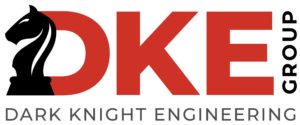Our Culture

SAFETY INDUCTION
Introduction
Further to the General Induction Training required for all construction workers, we provide this company-specific induction for all workers, labour hire workers, and contractors for DKE Group.
Visitors to the site will be supervised at all times and given a specific induction as required.
Site Safety Rules
All workers must follow the WHS Management Plan:
All workers must have a General Construction Induction Card
Smoking is only permitted in the Designated Smoking Area(s).
No Swearing, Rude hand gestures, or demeaning comments.
PPE Must be worn on site as per SWMS requirements and at a minimum;
- Footwear – Steel Cap Boot.
- Hi-Visibility clothing
- Hard Hats
Supervision
- All workers must have adequate supervision.
- Decide supervision levels on the risk level of task and experience of workers.
- Visitors will be accompanied by site representative at all times while on site.
- Adequate supervision must be provided to ensure compliance with SWMS.
- Apprentices must always be allocated a trade-qualified working buddy.
Licensing & Permits
- All persons must have appropriate and current licenses and permits.
- License to perform High-Risk Works, Asbestos, Confined Space, Forklift
COVID Safety
Staff are required to adhere to the NSW Health COVID requirements as issued from time to time:
Staff maybe required to be fully vaccinated for some customer work site.
COVID Safety Practices should occur:
- Staff should regularly clean their equipment
- Do not shake hands with staff, clients & visitors
- Wear a mask if not able to socially distance from others
- Use sanitiser regularly
SWMS "Safe Work Method Statements"
- SWMS must be developed in consultation with relevant workers.
- SWMS must comply with requirements of current WHS regulations.
- Workers must comply with SWMS at all times.
- SWMS must be available and accessible by all workers.
- SWMS must be updated to reflect any changes and communicated to workers.
- SWMS must be read, understood and signed by relevant workers.
Electrical Safety
- All Electrical equipment must be inspected before use.
- All electrical Equipment must be tested and tagged.
- As per WHS Regulations and AS/NZS 2012:2010
- Electrical work on energised equipment is not permitted unless necessary.
- Only licensed electricians may work on energised electrical equipment and under strictly enforced SWMS where utilising suitable PPE and equipment.
- Where conducting work near overhead electric lines and/or underground electrical utilities, identify hazards and implement suitable controls according to State Authority requirements before work commences.
- Where possible, the relevant Authority will be contacted to ensure power to the area can be isolated, if this is not possible, conduct work in the safest manner possible. Dedicated Spotters and implement risk assessments/SWMS accordingly.
- All underground and overhead electrical hazards must be marked and communicated to workers.
- Electricians must confirm Emergency Procedures are in place prior to starting work.
Worker Responsibilities
- All persons on site must treat each other professionally.
- Discrimination will not be tolerated.
- Workplace bullying, violence or practical jokes is not acceptable.
- Workers must take reasonable care of their health and safety and ensure that their actions (or inactions) do not put others at risk.
- Workers must comply with SWMS, policies and procedures at this site.
- Workers must participate in Toolbox Talks and safety meetings where possible.
Housekeeping
- All persons on site must clear away their waste in a reasonable time.
- Construction Materials and waste must not be stored in walkways or other areas where it is a hazard to others.
- Workers are responsible for cleaning their work area prior to starting work.
Plant & Equipment
- Plant & Equipment must be used for designated purpose and within manufacturer limitations.
- Persons Operating Plant & Equipment must NOT use their mobile phones. Including Making and Receiving calls, sending receiving of texts or using any other features.
- Operators must hold relevant High Risk Work License if required.
- Operators must have required training and be “competent” before using machinery.
- Pre-Start checks must be conducted before Plant/Equipment is used each day.
- PPE must be worn as per manufacturer recommendations.
- Plant & Equipment must be serviced as per manufacturers recommendations.
- Plant must be registered with the Regulator where required.
- Exclusion zones should be setup where possible.
Emergencies, Evacuation
& First Aid
- Workers must report all Incidents and Injuries to the Site Supervisor and complete an Incident form ASAP.
- The Emergency Evacuation Procedures will be explained to you by your supervisor.
- The evacuation point is marked in the Evacuation Procedure displayed at site.
- Workers must know the location of First Aid Kits and Fire Extinguishers.
- Workers should call 000 in the event of an emergency.
- Workers must know the location of the nearest Medical Facility.
Drugs & Alcohol
- There is a ZERO tolerance for drug and Alcohol use on site.
- You must not be under the influence of Drug or Alcohol while on this site.
- While at this site you may undergo random Drug and Alcohol testing.
- Workers found to be under the influence of Drugs or Alcohol will be banned permanently from site.
- Workers must report any suspicious activity to the site supervisor.
- You may not bring any drugs or alcohol onto this site.
Hazardous Chemicals
- MSDS – Safety Data sheets must be provided for all chemicals brought to site.
- MSDS – must be current (less than 5 years and have Australian contact details)
- All Chemical containers must be labelled.
- PPE must be worn as per MSDS requirements.
- Workers must be trained on the Chemicals they are handling.
- A method for handling spills and cleaning must be available.
Confined Space
- Workers should not enter into a confined space unless they have received the proper training.
- A permit must be acquired to work in a confined space.
- These spaces must be clearly identified with a sign showing “DANGER – CONFINED SPACE – No unauthorised entry and the space must be barricaded off.
- An entry and exit log needs to be used.
- Apply gas test monitoring regularly.
- Have a rescue plan in place.
Working at Heights
- When working at Heights – Edge Protection must be in place before starting work.
- Railings and Scaffold must have top and Mid Rails.
- Voids must be covered unless in use immediately.
- Ladders must be appropriate for work. Non-Conductive, Platform, undamaged.
- Scaffold over 4m must be erected by licensed scaffolder and have scaf tag attached.
- Mobile scaffold must NOT be over 4m in height.
- Mobile Scaffold may only be erected by competent person.
- Fall Restraint systems must be accompanied by competency certificate.
Supervisor Notes
- The Supervisor will now explain the hazards specific to this site.
- The Supervisor will now show you any “No-Go Zones”.
- The Supervisor will now show you the loading and unloading areas and security requirements.
- The Supervisor will show you the First Aid and Fire Extinguisher location.

